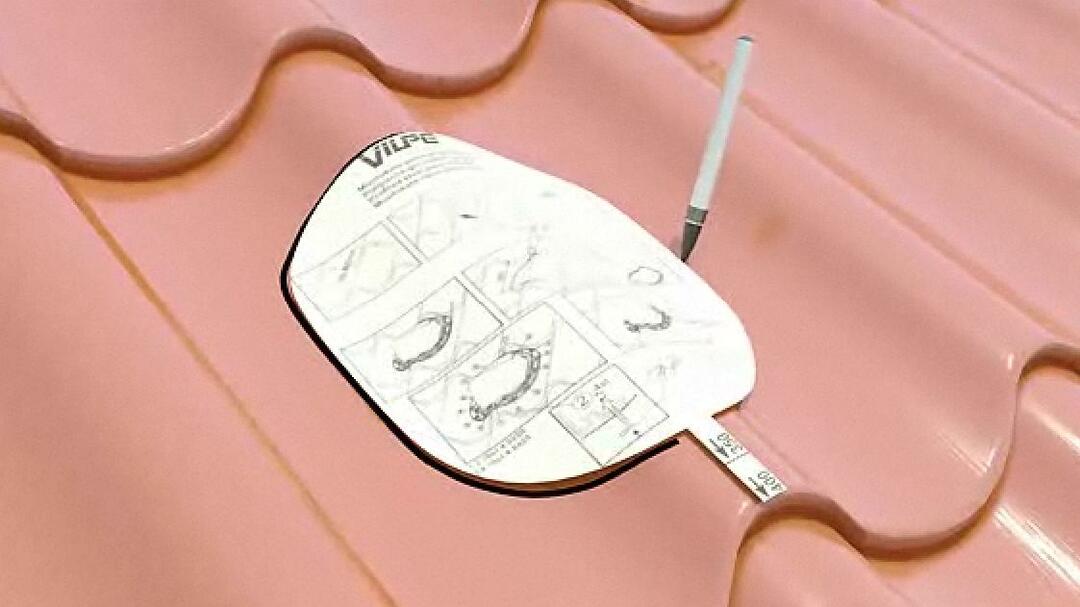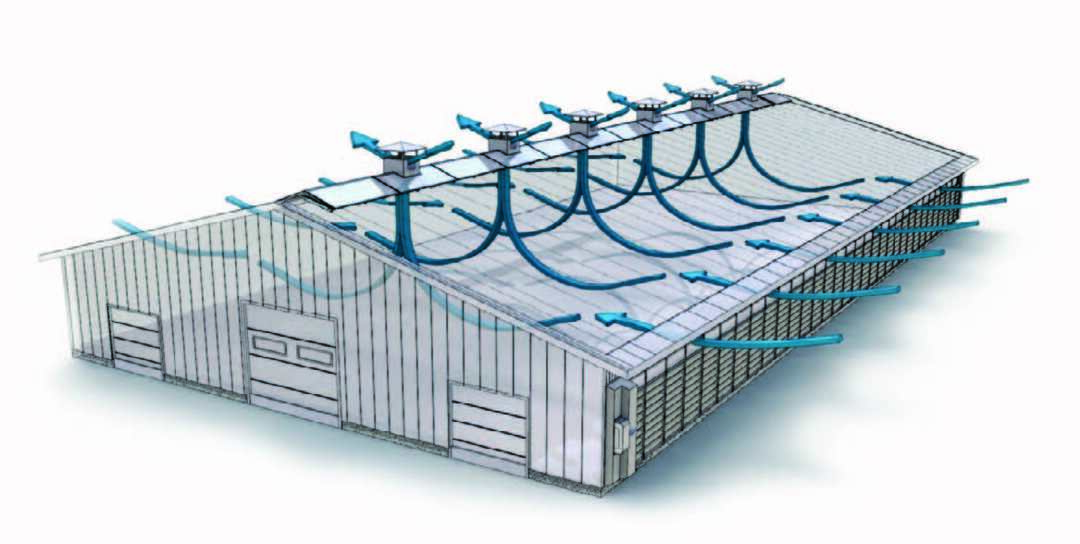The split system consists of internal and external parts. The process of operation of the device in cooling mode is accompanied by the release of liquid. Is the condensation from the outdoor unit of the air conditioner not the most pleasant substance in this design? And its entry into the premises is generally highly undesirable, isn't it?
There are no special technical difficulties in installing a drainage line to remove moisture. A special condensate collection tube is usually installed together with the outdoor unit of the split system. We will tell you about all the popular options for further arrangement of the drain.
Helpful advice may come in handy when supervising contractors. Perhaps you can use our advice for making your own system for draining and disposing of condensate.
The content of the article:
- Where does the unnecessary liquid come from?
- How does the drain take place in practice?
- What is condensation?
- What are the ways to discharge water?
- Requirements for the installation of drainage pipes
-
Draining into the sewer system
- Diagram of the outlet line inside the house
- Installing a condensate siphon
-
Why do you need a drain into the sewer?
- The expediency of a complex option
- What do the rules prescribe?
- Disadvantages of gravity drainage to the street
- Reasons for malfunction of the drain line
- Conclusions and useful video on the topic
Where does the unnecessary liquid come from?
The air in the air conditioner is cooled by the circulation of the refrigerant. The element of the flow circuit in which the temperature decreases is called the evaporator.
The device received this name because droplets of moisture appear on its body during operation, that is, "perspiration". The resulting liquid is the very condensate that needs to be removed from the split-system unit.
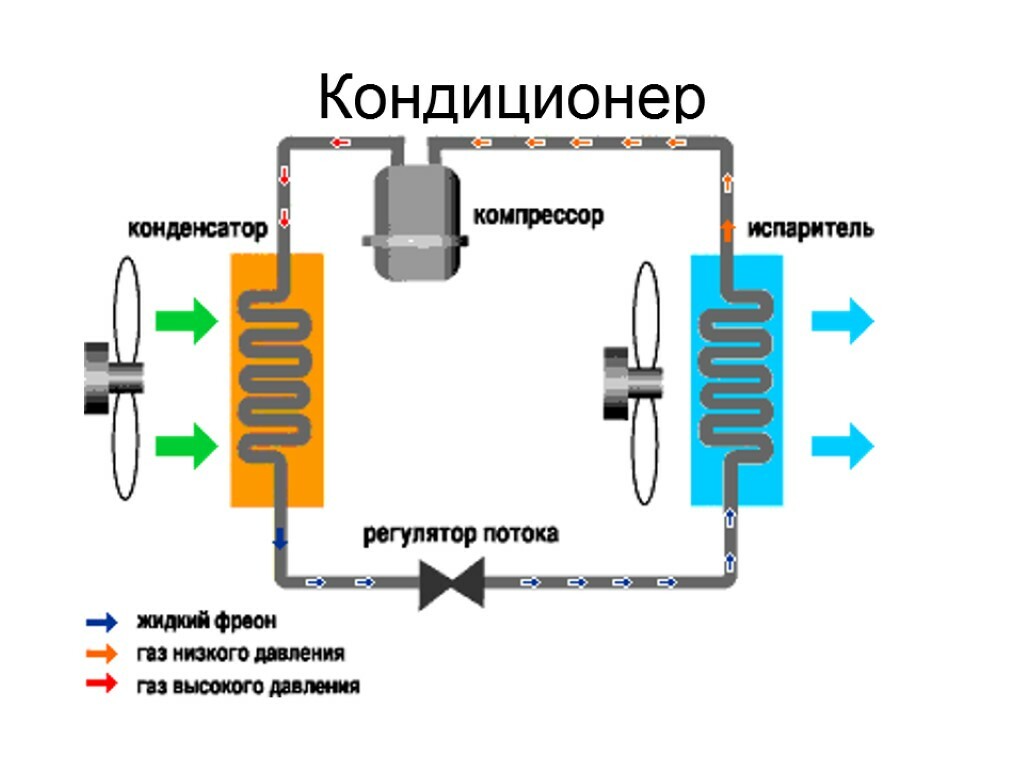
Moisture is released from warm air at the moment of sudden cooling. Up to 15-20 liters of liquid can accumulate from one operating unit per day
Drainage of accumulated moisture is essential for the proper operation of the air conditioner. The climatic apparatus operates from the electrical network. As you know, water is a good electrical conductor. With high humidity, there is a risk of a short circuit in the device circuit. Damage to expensive electrical equipment can be prevented by properly draining condensate.
How does the drain take place in practice?
A small opinion poll conducted among air conditioner users showed interesting statistics.
When asked where do you drain the condensate, the following answers were received:
- Just outside - 68%;
- Into the sewerage system by gravity - 16%;
- In a special drainage system - 8%;
- What kind of condensation? – 8%.
Let's explain the essence of dumping liquid for the unenlightened last category of owners split systems. For those who do not know where the condensation formed in the air conditioner goes, it is useful to read the instructions for the device. It gives clear instructions for the installation of the drain outlet from the air conditioner unit.
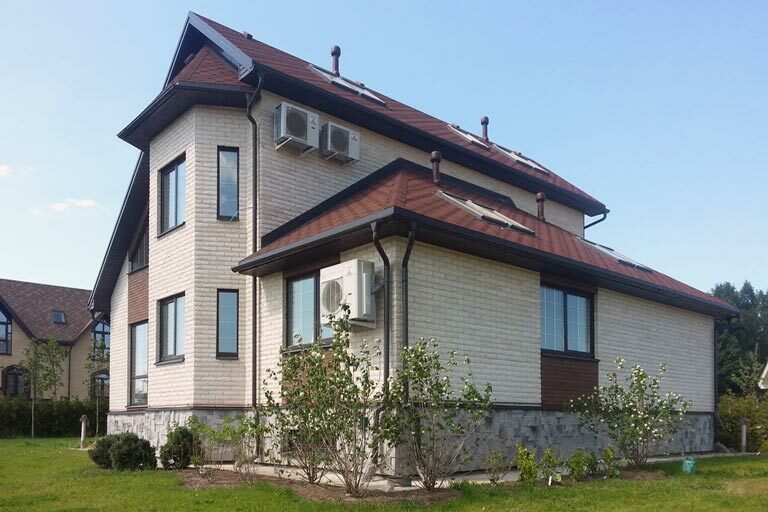
The problem requires special attention in large private houses with several air conditioners in different rooms. An organized decision to collect condensate should be made during the design phase of the climate system.
It is necessary to remember about the peculiarities of climatic technology that produces fluid not only during design and installation. It is also necessary to monitor the moisture removal process during the operation of the air conditioner.
What is condensation?
The risk of harm to health from improper removal of evaporated moisture is much more dangerous than the threat of a split system breakdown. Although, in terms of its chemical composition, the condensate is just ordinary water. But the fact is that pathogenic microbes accumulate in the stagnant warm moisture.
Consequences of non-drained condensate can be:
- unpleasant musty smell from the air conditioner;
- reproduction of legionella pathogens;
- the formation of various forms of mold.
It is a mistake to consider the air conditioner as the main cause of severe "legionnaires' disease". A dangerous microorganism lives in the soil, swimming pools, decorative fountains. Wherever there is stagnant water, even in medical physiotherapy equipment, there is a risk of encountering legionella.
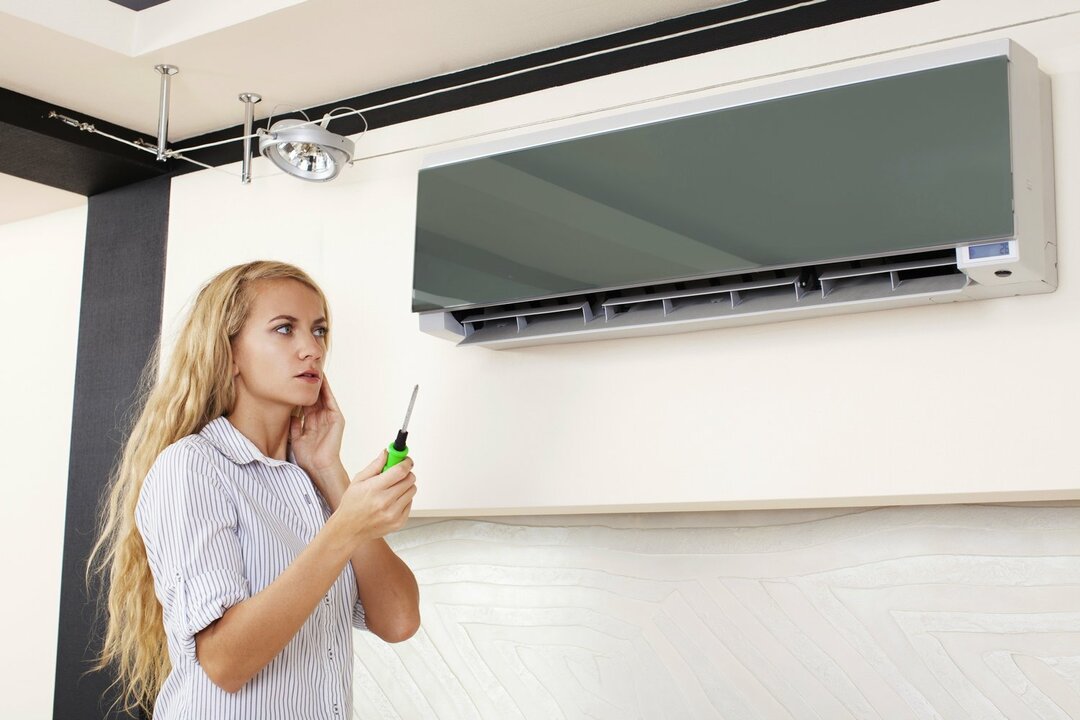
Removing excess moisture from the split system is essential for the health of your family. Constantly draining condensate will not give a chance for the development of stagnant water
The drainage system is designed to drain excess moisture. Correctly executed condensate drainage and timely maintenance make the climatic equipment completely safe.
What are the ways to discharge water?
The cheapest option is gravity removal of the by-product. But there are variations in this fundamental performance. They are located at the place where the condensate is received.
The main ways to drain fluid:
- Just take the drain pipe outside and leave it on the wall with dripping condensation. This standard technique is used in most installed split systems.
- Connect a long drain hose to the drain and collect the condensate in a container. In hot weather, you will have to monitor the filling of this drain tank, which is not very convenient.
- The drain pipes can be fed into the nearest sewer pipe or sink. Such a gravity system requires strict adherence to the slope of the highway in the installation.
- Install a scheme for forced drainage of moisture into the sewer using a pump. A pump is used at a considerable distance from the air conditioner to the place of condensate discharge.
Air conditioning is not the cheapest technology available today. Therefore, you should not skimp on correct design and installation of a drain system waste moisture.
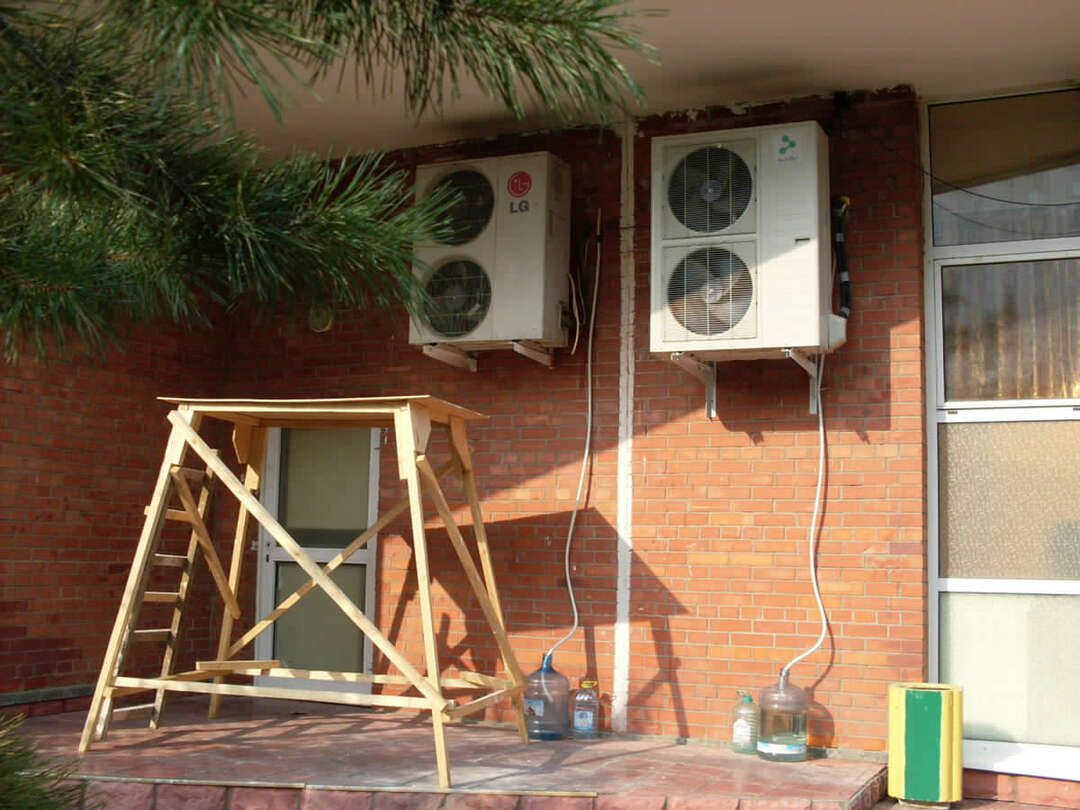
Collection of condensate in a plastic bottle does not require material costs. The main thing is to drain the accumulated liquid into the sewer in time
In any case, drainage must be done correctly from the very beginning of the installation of the split system. Whichever option you choose to remove condensed moisture.
Requirements for the installation of drainage pipes
Manufacturers of air conditioners do not recommend using corrugations for electrical wiring, garden hoses in condensate drain lines. The route of the gravity condensate drainage system should not have bends and sharp turns.
Special smooth and corrugated pipes for condensate drainage have the required strength. They are made from polyethylene, polystyrene, metal-plastic.
The drain line parameters are as follows:
- Horizontal sections have a slope of about 3%, when cornering, the maximum permissible angle is up to 45O;
- The standard inner diameter of pipes is usually 16 mm, hoses cannot be inserted into each other;
- A tight connection of the hose to the split system unit is provided by fitting adapters.
At the bottom of the case of the outdoor unit of the air conditioner there is a special hole for connecting a flexible drainage pipe.
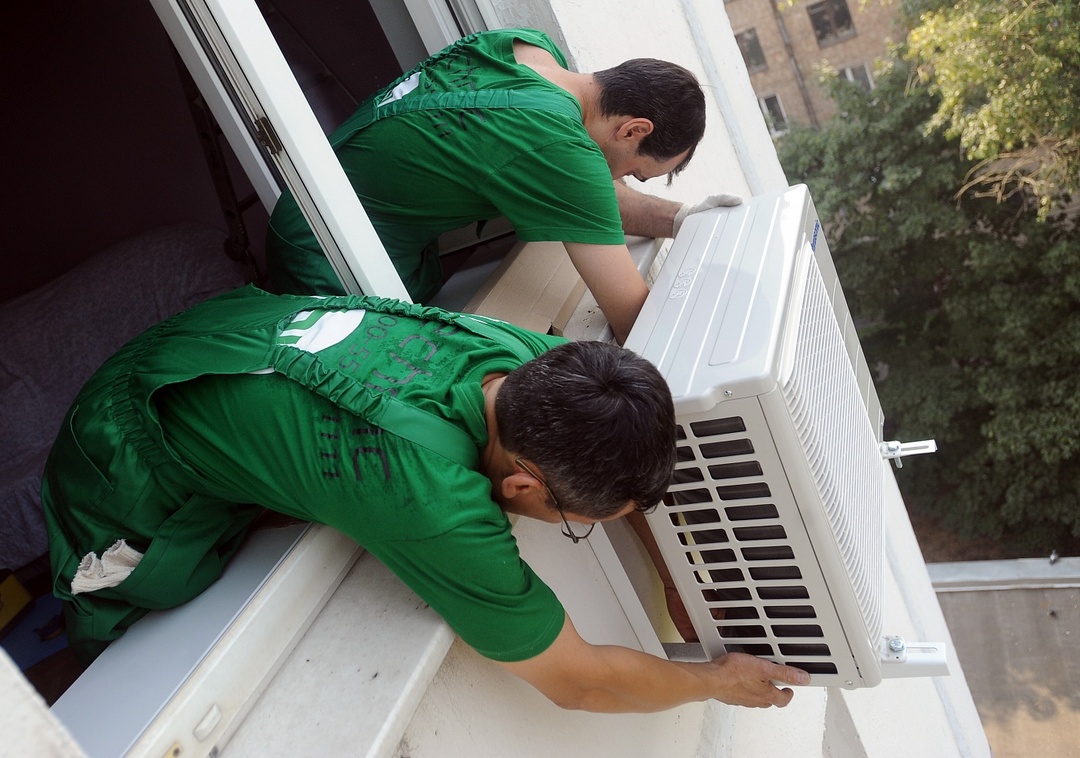
Mistakes in the installation of the drainage line are expensive for the owner of the air conditioner. Improperly equipped drainage from a split system can cause flooding of the basement and lower floors of the house.
For routing the connecting cables and the condensate drain hose between the outdoor and internal blocks of a split system a hole is punched in the wall. It must be done with a slope towards the street. Even with a forced liquid removal scheme. After all, the pump may fail and for some time the moisture will be removed by gravity.
Draining into the sewer system
The best solution is to drain the condensate into the sewer. The problem with this drain is that air-conditioned dwellings usually do not have a sewer section.
What to do if condensate from the climatic unit flows into the treated room, will tell next articlewhich we advise you to read.
The solution is one of the following:
- Laying a drainage pipe with observance of the slopes to the sewer in another room.
- Installation of a sewer pipe to the room in which the air conditioner unit is installed.
Choose a condensate drainage method that suits you. As a rule, the labor intensity and cost of materials are lower in the first case.
Diagram of the outlet line inside the house
The outdoor unit does not produce condensation in cooling mode. Water dripping on the heads of passers-by in hot summer is collected in the indoor module. And then it is removed from a special storage bath through a drainage pipe to the outside.
But it is not necessary to remove the liquid to the external module of the system. The condensate collected in the room can be sent from the air conditioner to the sewer to the nearest riser indicated in the piping diagram inside the house. The shorter the length of the drainage system section between the indoor module of the split system and the sewerage system, the easier it will be to maintain and repair the line.

During planning and installation, a large number of bends in the condensate drain line must be avoided. It is better to make a hole in the wall when laying a line to an adjacent room
Connecting the condensate drain line to the sewage system requires knowledge and experience. If you are going to do this work yourself, consult with masters with practical experience in this area.
Installing a condensate siphon
A water seal serves as protection against the penetration of unpleasant odors from the sewer into the room. This function is performed by a conventional sewer siphon. The device is mounted at the junction of the sewer and drainage pipes.
Moisture from the air conditioner first accumulates in the siphon. At a certain level of the device there is a shutter that releases liquid into the sewer. The siphons are equipped with a safety valve that protects against the penetration of odors.
According to the installation methods, siphons are classified into:
- closed built into the wall;
- outdoor open execution;
Structurally, they are conventional with a water seal, ball with a rubber locking element, dry with a jet gap and without this function, etc.
Built-in closed siphons have different depths. To mount them in the wall, you should select a model corresponding to specific dimensions.
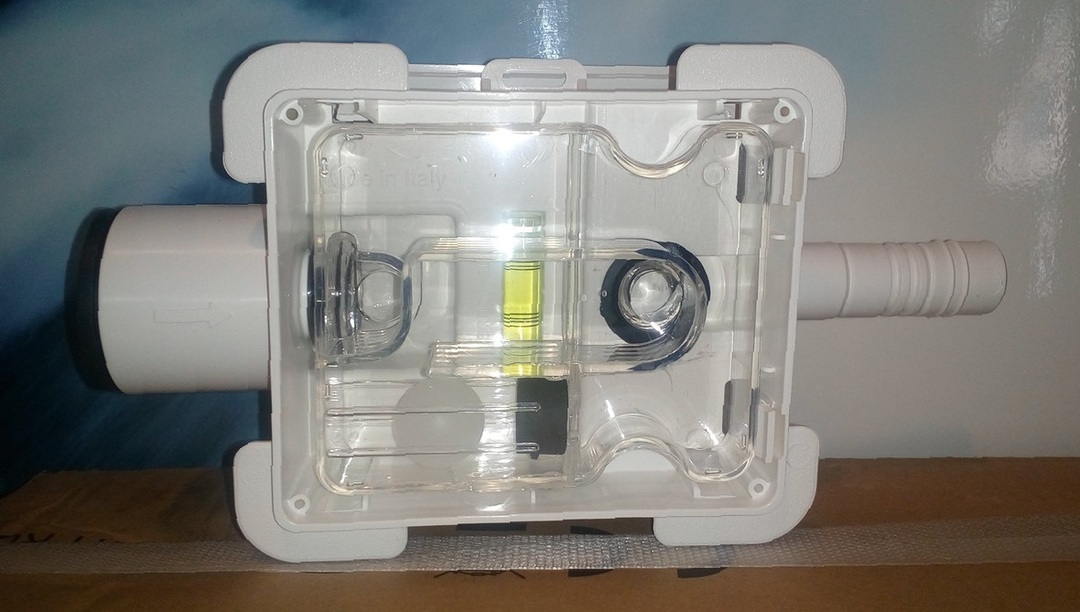
Convenient external siphons made of transparent plastic, allowing you to track their overflow and contamination
The efficiency of a device is characterized by its bandwidth. Various models of siphons differ in the type of thread. Consider this point when purchasing equipment.
Why do you need a drain into the sewer?
Connecting the drainage system to the sewer system is the most expensive option for removing condensate from a split system. But experts recommend choosing this method, despite the costs. Because he is the most correct in all respects.
The expediency of a complex option
The first air conditioners were installed without much thought about environmental protection. But today, environmental issues come to the fore in the technical development of society.
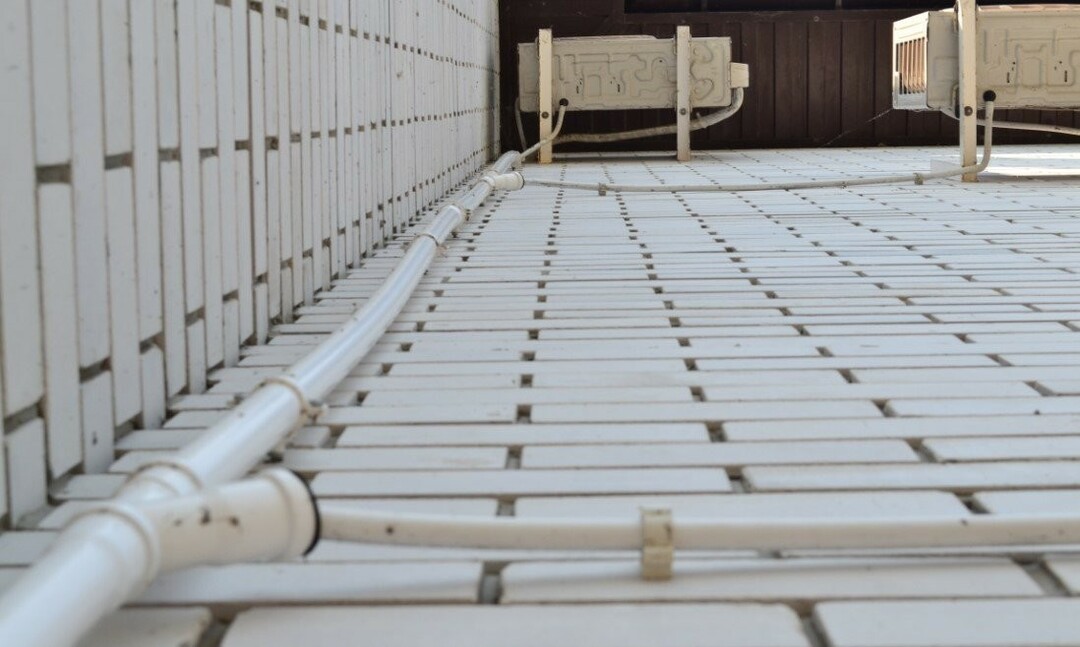
Expensive climatic equipment is purchased for a long service life. Careful Care Will Extend His Life
The health of man and his lesser pet friends needs to be taken care of. Disease takes away energy and money for medicine. Therefore, the most costly method of diverting the drainage line to the sewer will pay off over time due to savings in treatment.
Clean air without harmful vapors from dripping condensate is useful both in a country house and in adjoining areas in multi-storey urban areas.
What do the rules prescribe?
The drainage of liquid into the sewer is only recommended, but not prohibited by the instructions for the climatic equipment. It's just that this method is the most gentle for the proper long-term operation of the device. It eliminates the dangerous consequences of the accumulation of large amounts of moisture on the evaporator of the air conditioner.
Constantly slipping statements about the requirements of the law to mount condensate drain only into the sewer system are unfounded. Those who wish can be convinced of this by looking at the court practice on claims against the owners of air conditioners with gravity street condensate drains. The courts refuse to satisfy such claims, as they are not substantiated by legislative norms.
There are local prohibitions on the emission of condensate into the atmosphere as part of the decisions of housing entities. We will not speculate about the legality of such documents. As they say, the collective farm is voluntary.
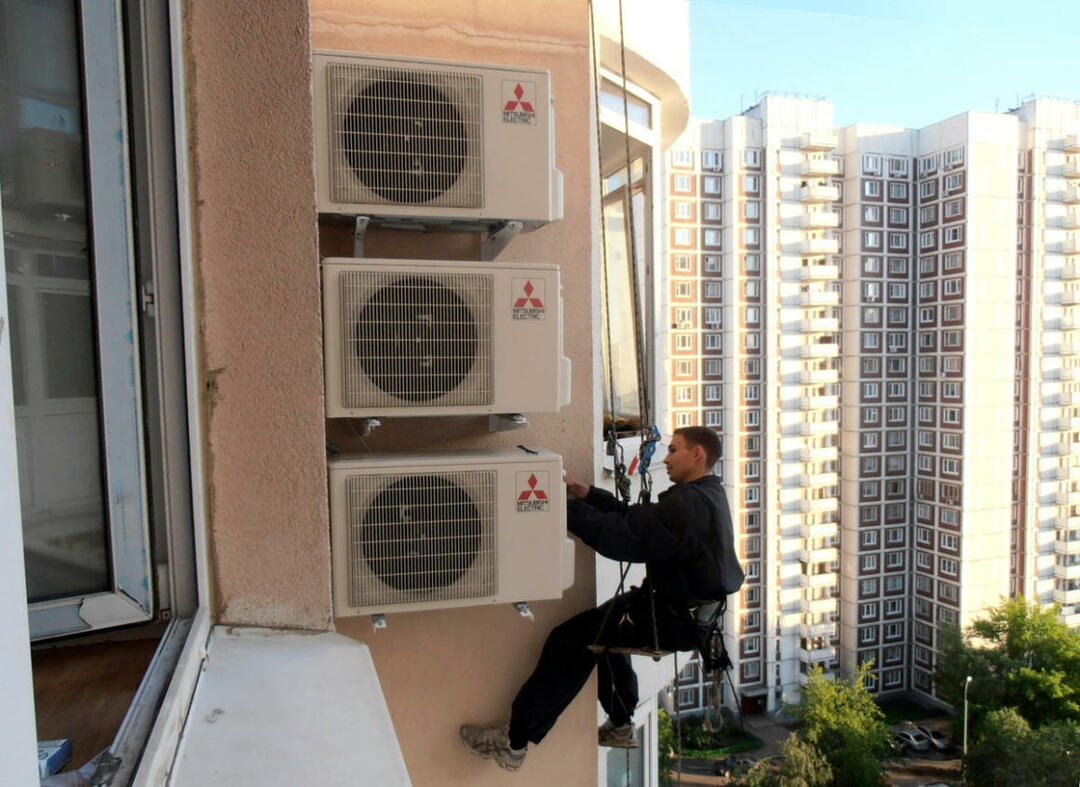
Building codes prescribe the discharge of condensate into the sewer. But the execution of SNiPs is mandatory only for new premium-class residential buildings that are being commissioned with an installed air conditioning system.
Yet there is one universal prohibition that applies to any condensate drainage system. Do not drain moisture from the air conditioner into a storm sewer. This is dangerous for equipment. Due to the pressure build-up due to rain, water may overflow the air conditioner through the drain pipe.
Disadvantages of gravity drainage to the street
They use a simple accessible method for reasons of saving time for installation and money to pay for the services of masters. However, this method of removing condensate has a number of unpleasant nuances.
Water flowing out of the drain tube:
- pollutes the facade, windows, and sometimes it gets on passers-by;
- breaks the silence of the night, spreads dangerous germs;
- slowly but surely destroys the structural elements of the building.
The sight of dirty puddles under the module does not cause aesthetic delight. The pounding of drops at night may not bother you at all. But it is not known how your sensitive neighbors in an apartment building or townhouse will react to noise.
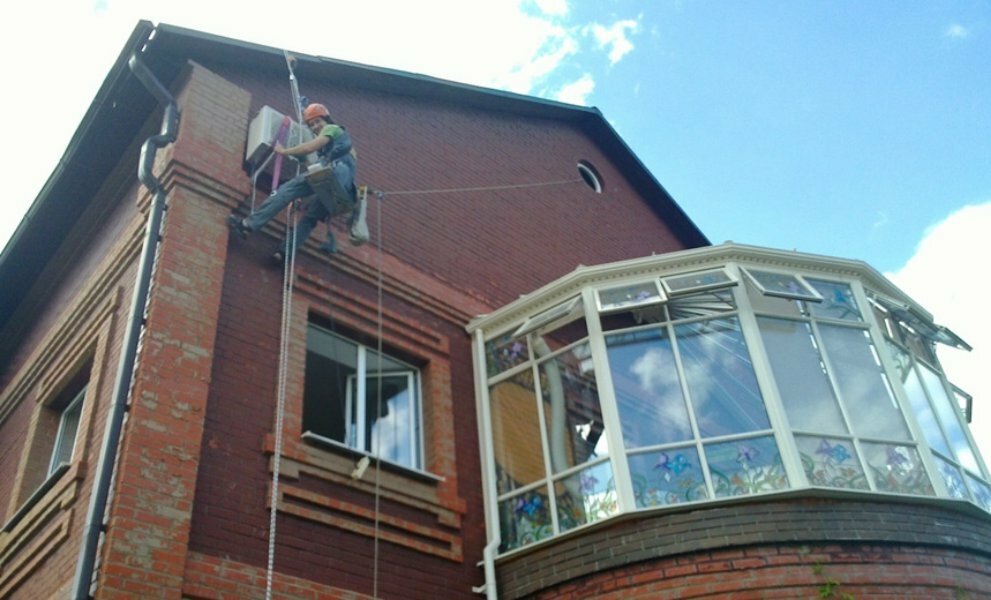
In a private house, a dripping water hose hanging on the wall spoils the look with its slovenliness. Steam particles carry harmful organic components of the condensate to the local area
The water itself, formed from the collection of condensate, is an undesirable product and must be disposed of. From the point of view of hygiene, ethics, safety of people and pets, this waste liquid is best discharged into the sewer system.
Reasons for malfunction of the drain line
Condensate leaks from the drainage system are the result of improper installation or the use of low-quality materials. In such cases, you have to pay for the additional work of the masters to eliminate defects.
The reasons for the malfunction are as follows:
- The hole in the wall for the drain pipe and other connecting wires between the outdoor and indoor units is drilled parallel to the floor and not with a slope towards the street;
- Weak insulation or its complete absence on the tube with freon causes moisture to collect on its surface and condensate flowing out of the drainage system;
- Kinks and damage to the laid drain pipe block the path of free or forced moisture flow, cause overflow and leakage from the condensate drain line.
Due to poor quality rolling, freon leakage may occur. Then the heat exchanger freezes and moisture flows from it when the air conditioner is turned off.
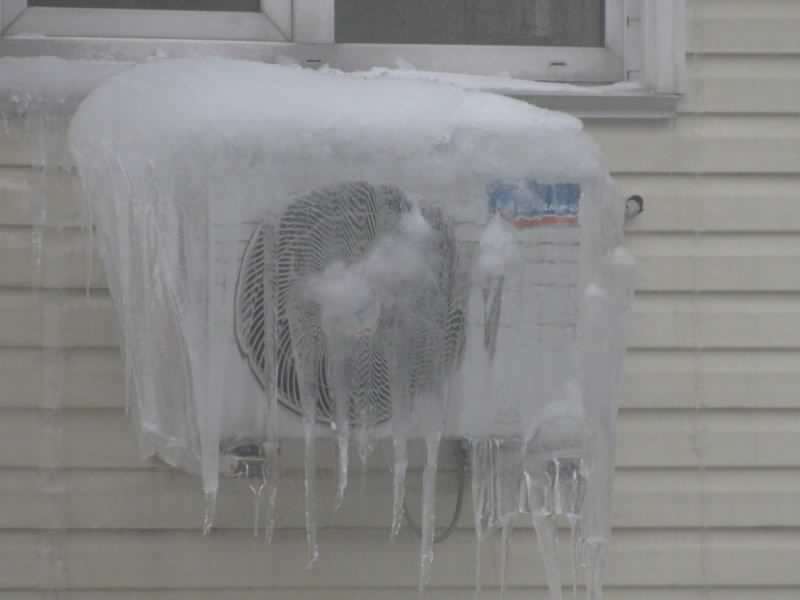
The split system should not be used to heat a room when the outdoor temperature is below freezing. Except for air conditioners equipped with heated drain pipe and compressor
In winter, when the air conditioner is turned on for heating, moisture from the hot air forms on the external module of the split system. The drainage tube freezes at low temperatures, a leak appears on the entire surface of the outdoor unit.
The reasons listed are not exhaustive. Breakdown of the drainage system and leakage of condensate can also occur due to improper maintenance, contamination of individual parts of the split system. With rules and specifics cleaning of climatic equipment will introduce the article recommended by us.
Conclusions and useful video on the topic
Correct installation of the siphon for the drainage system for discharging condensate into the sewer:
How not to drain condensate into the sewer, analysis of installation errors in the drainage system of the air conditioner:
If the system for draining moisture from your split system does not suit others, consider changing the way you remove unnecessary liquid. You can independently drain the condensate into the sewer from the drainage system of the air conditioner or supervise the installation by specialists.
Have you already coped with this task and are ready to share your practice? Tell us about the important points missed in this review of the condensate drainage problem? We are waiting for the publication of your photos, questions, comments, useful tips.
